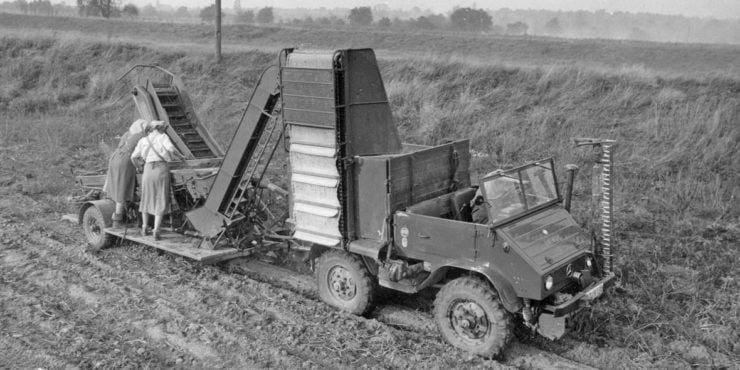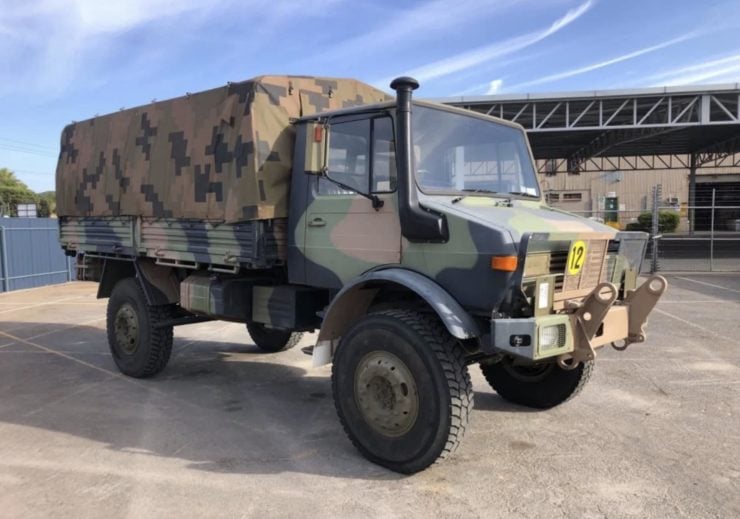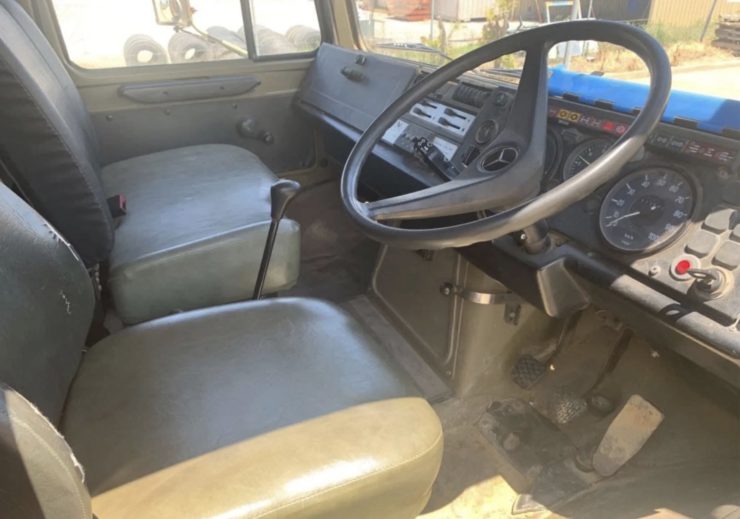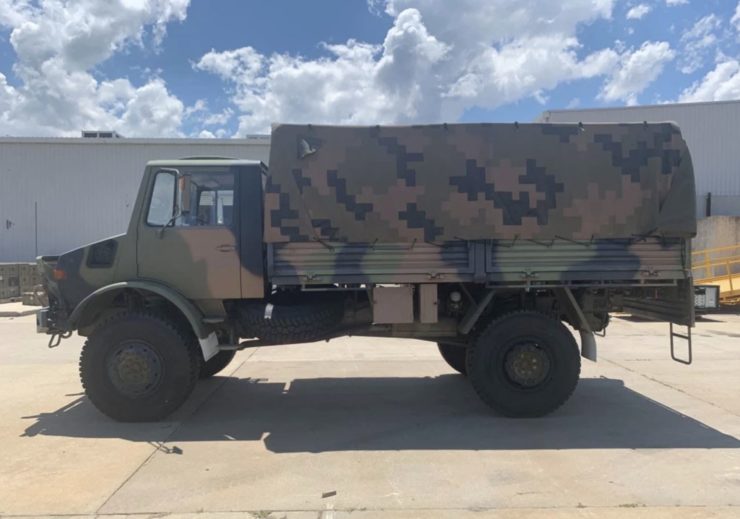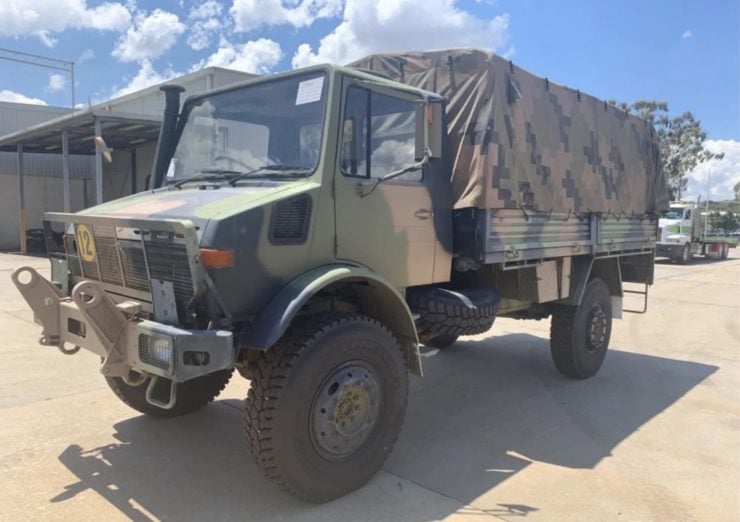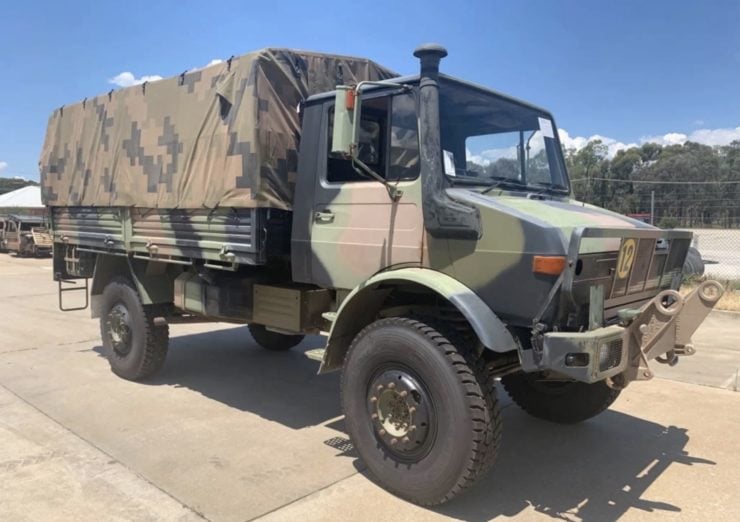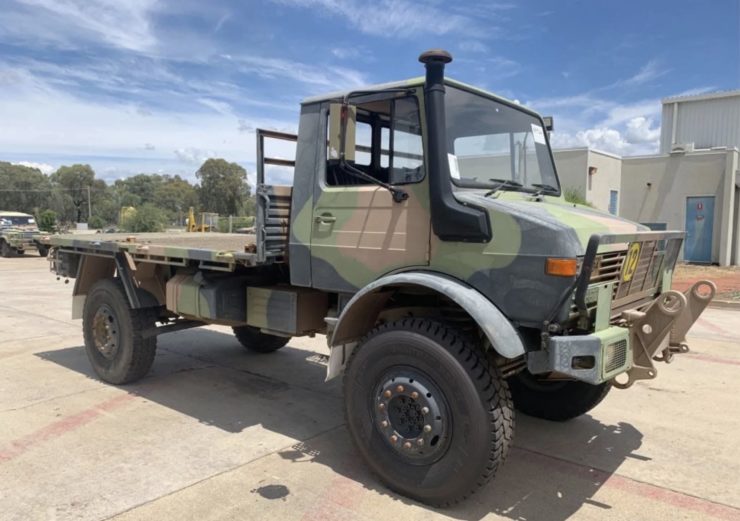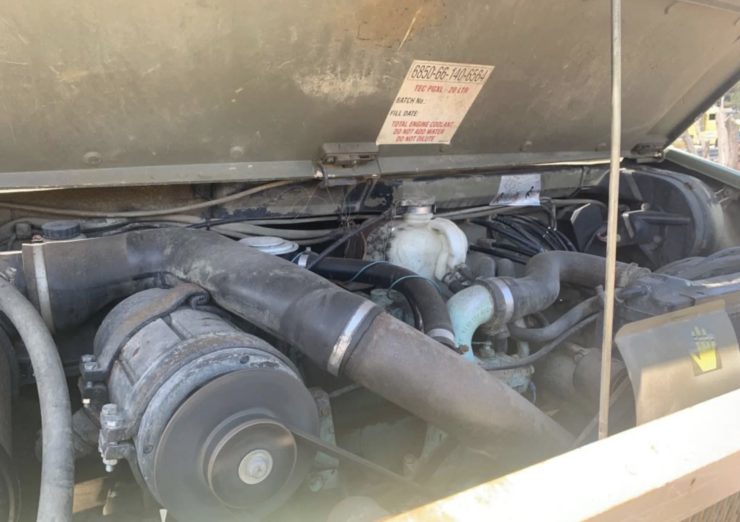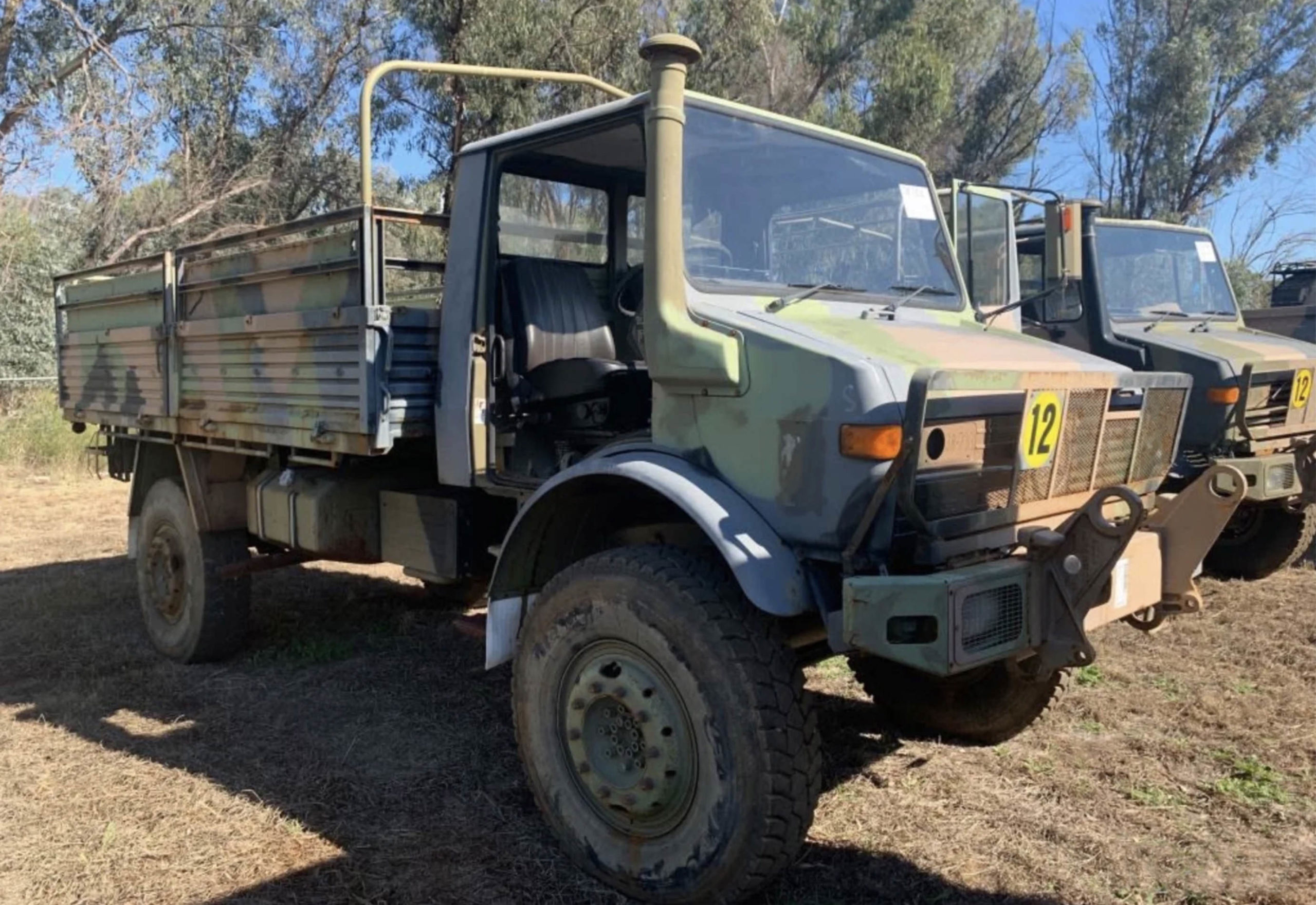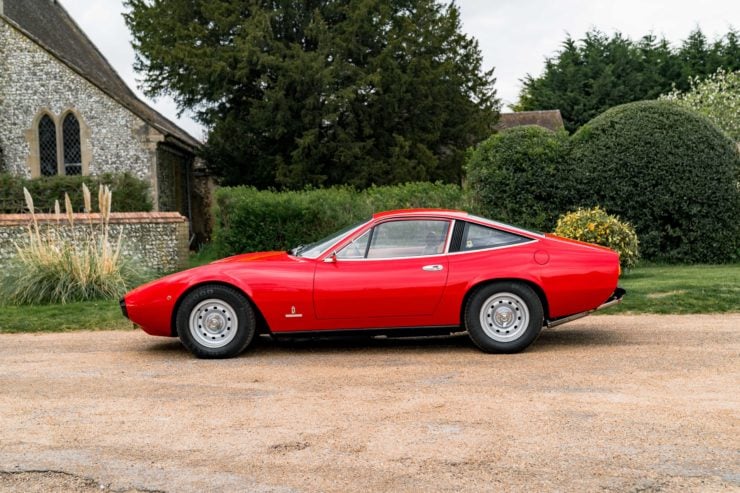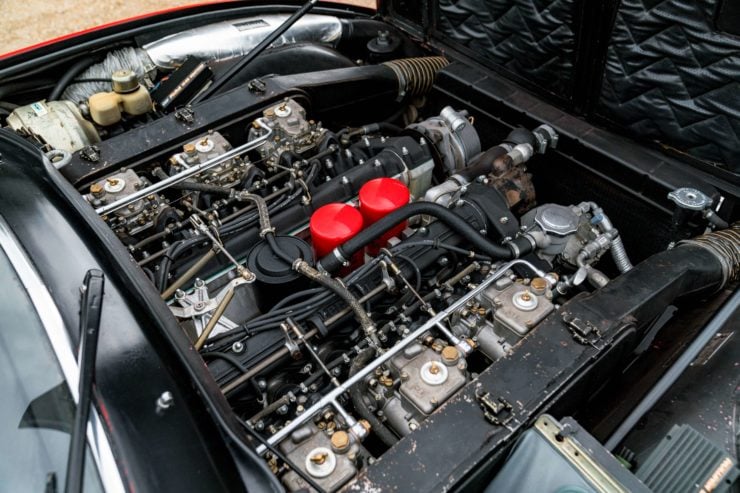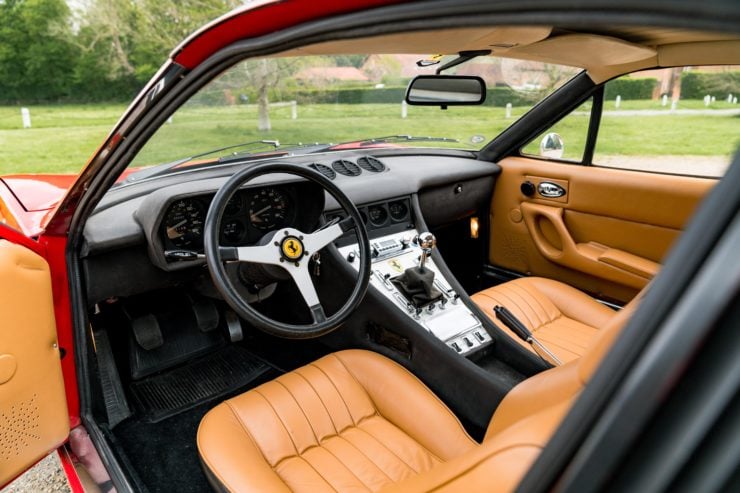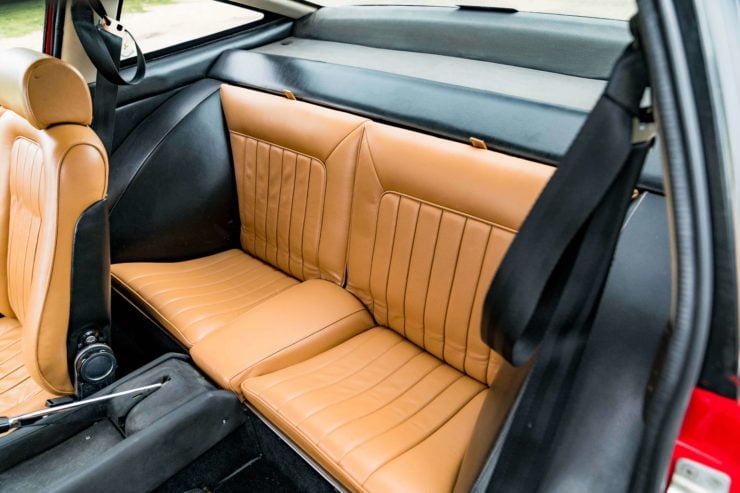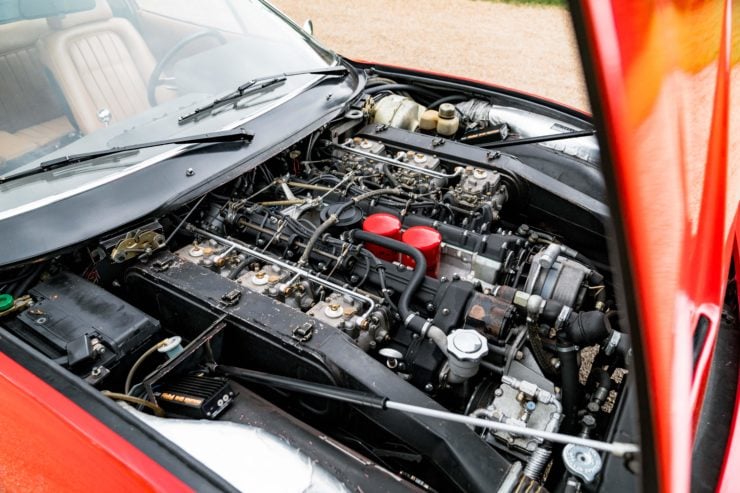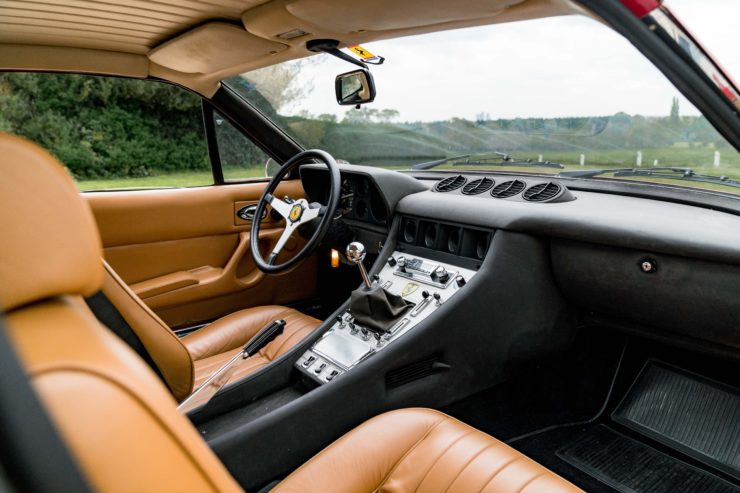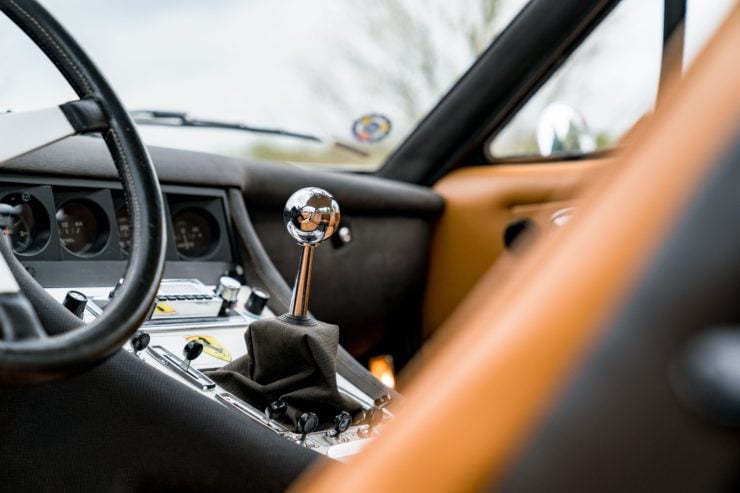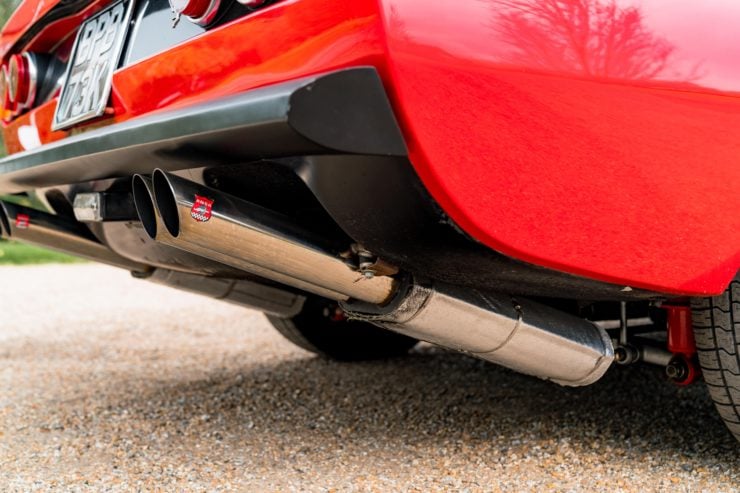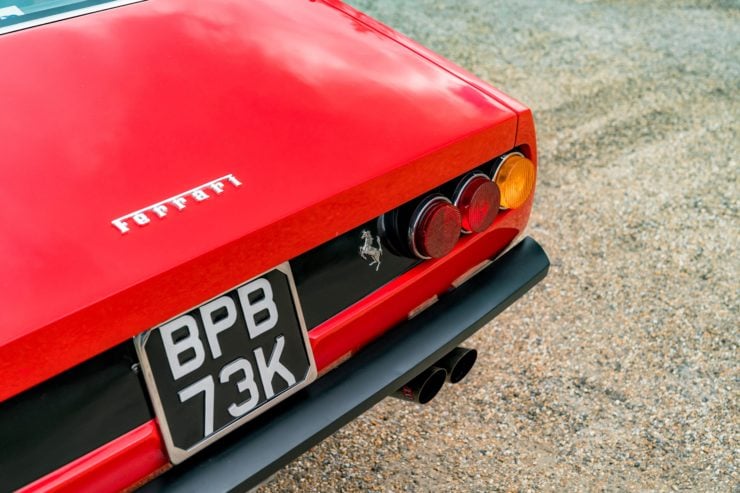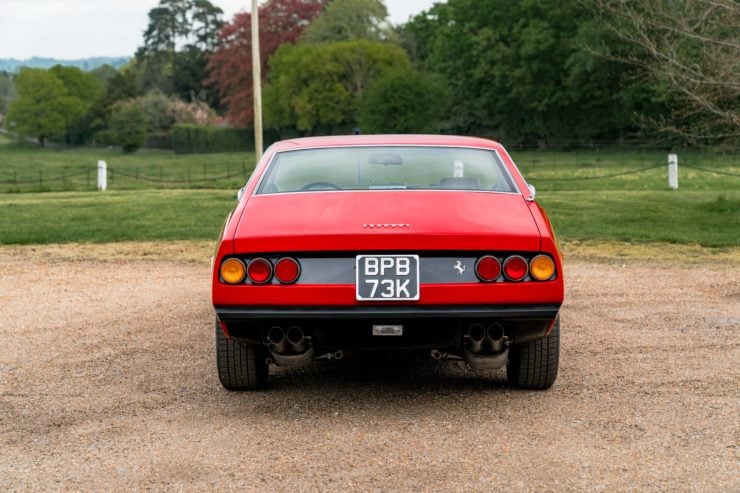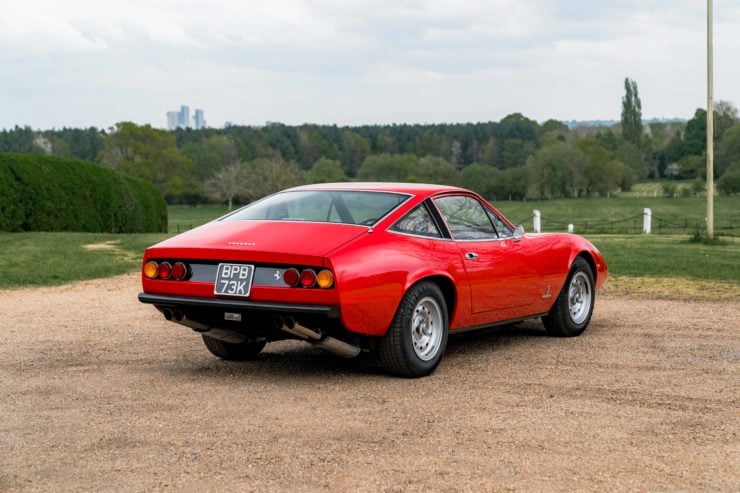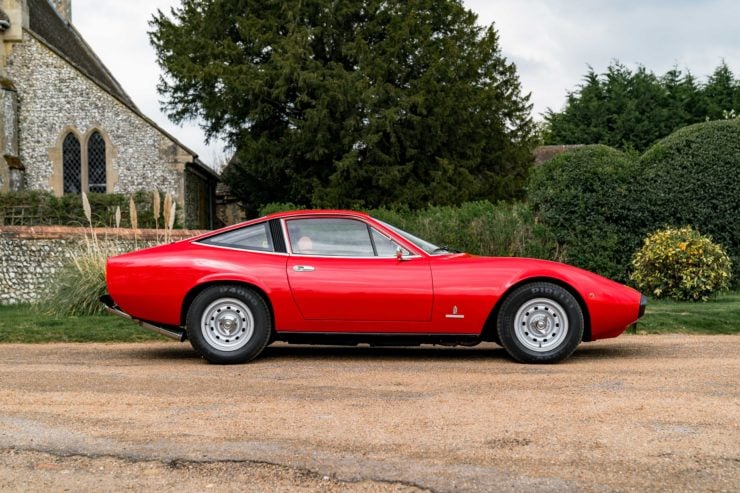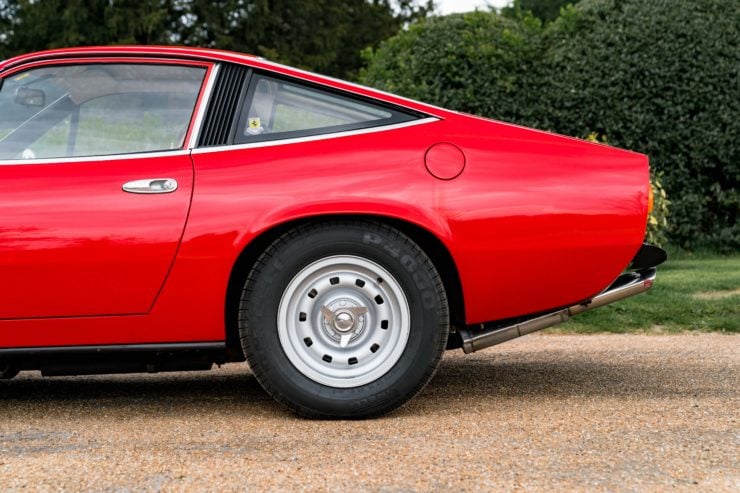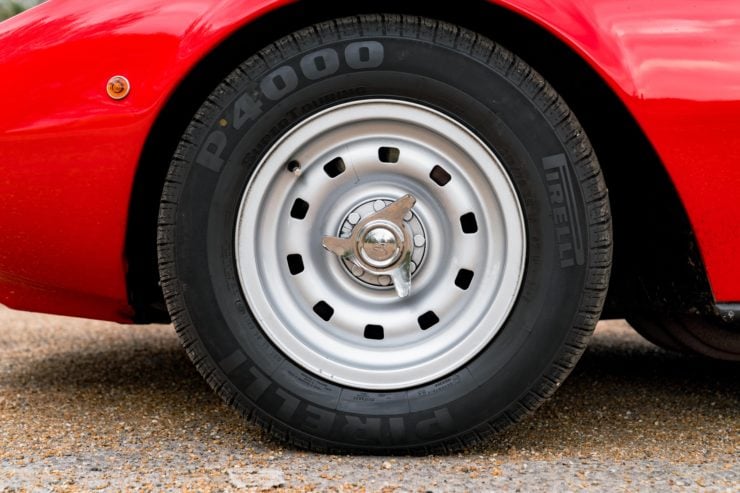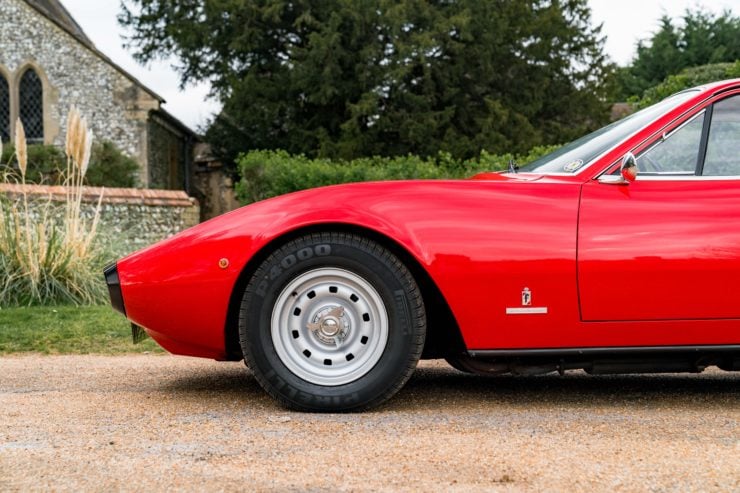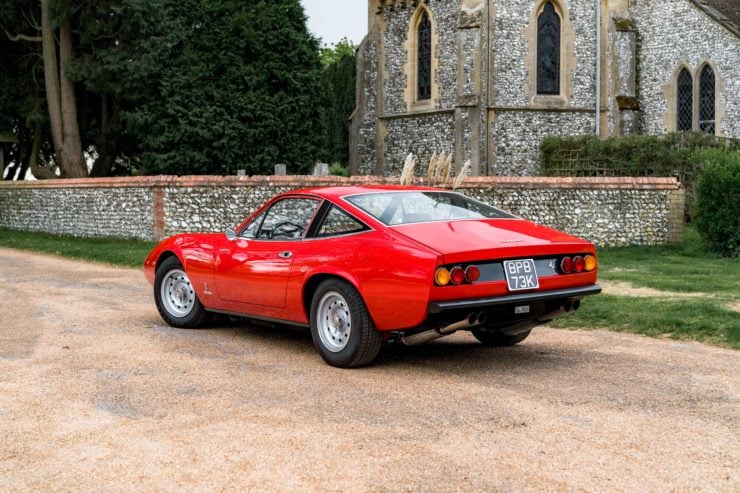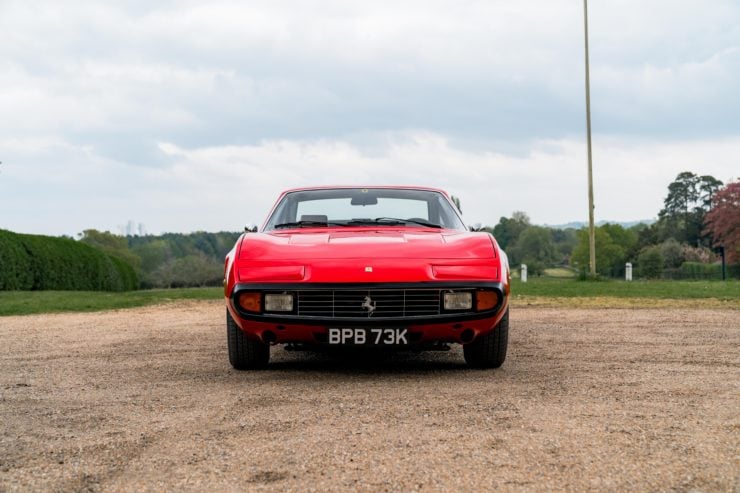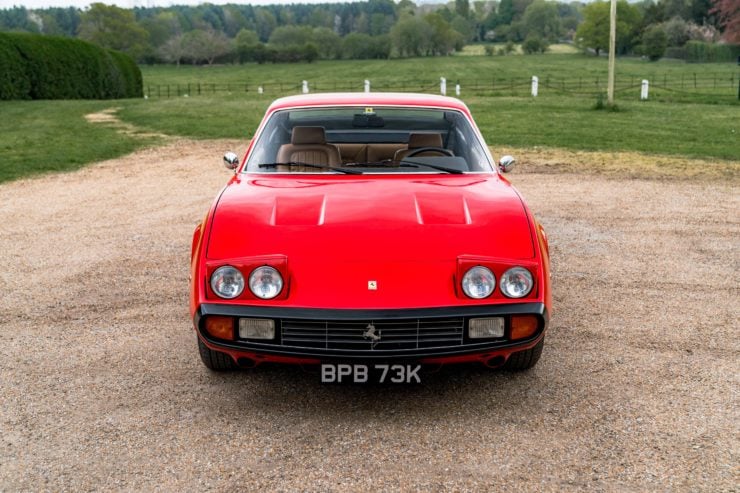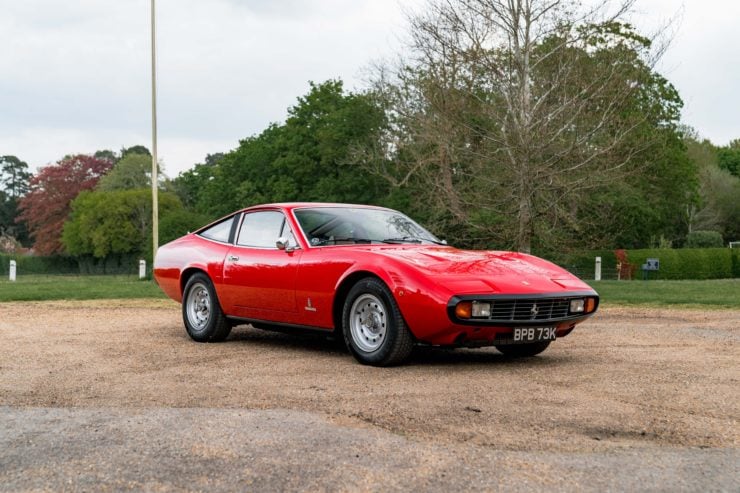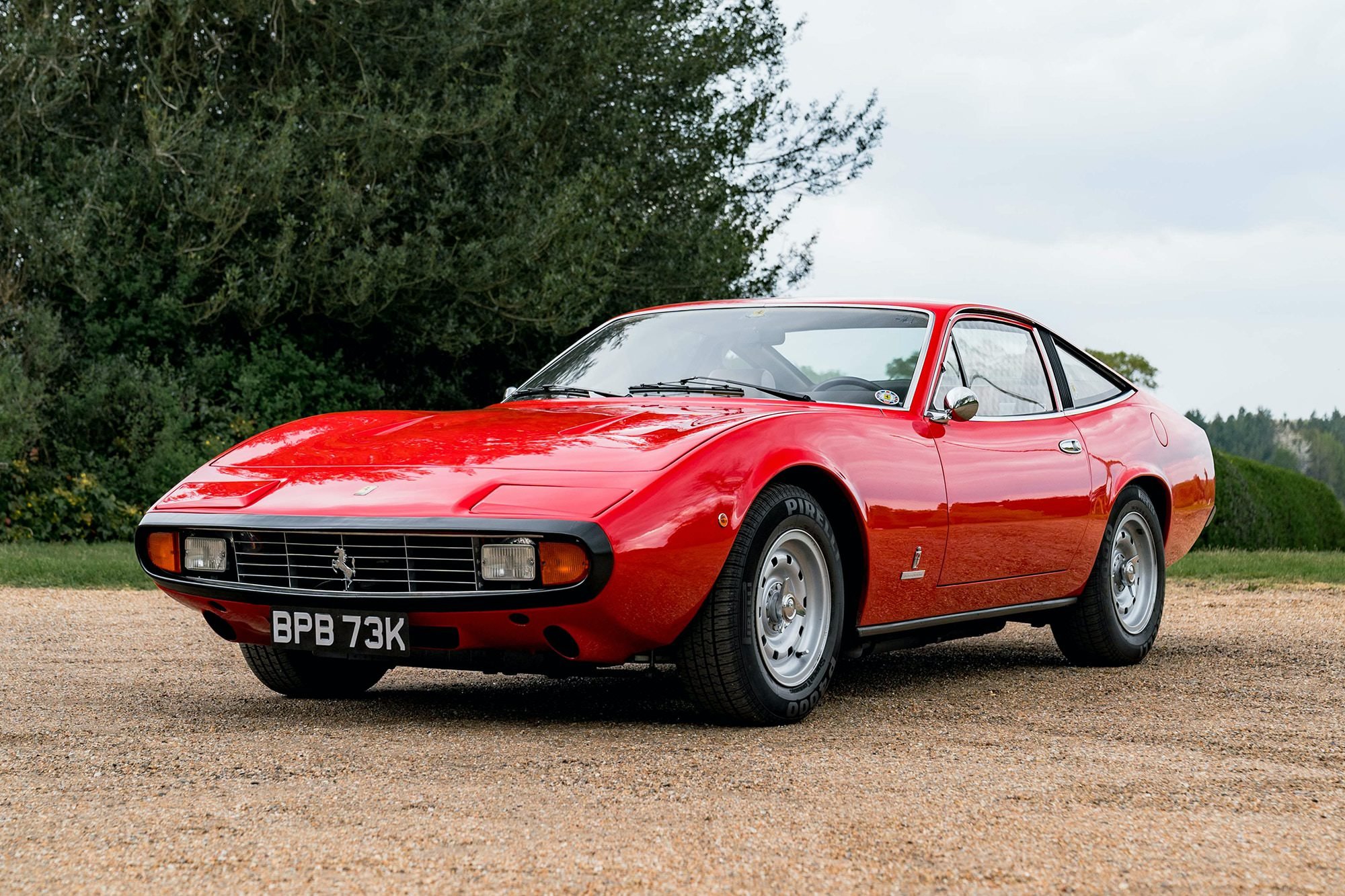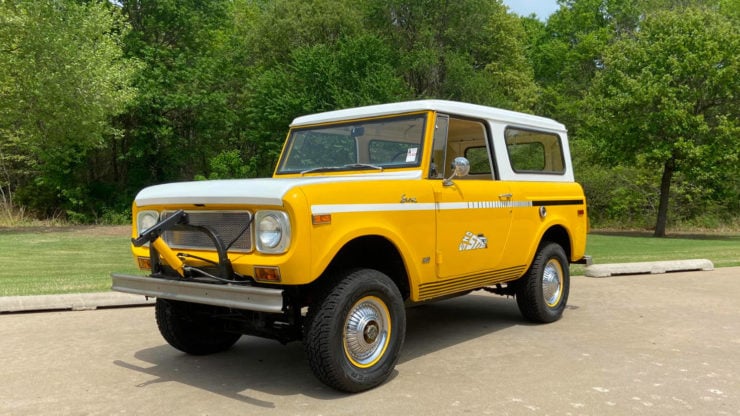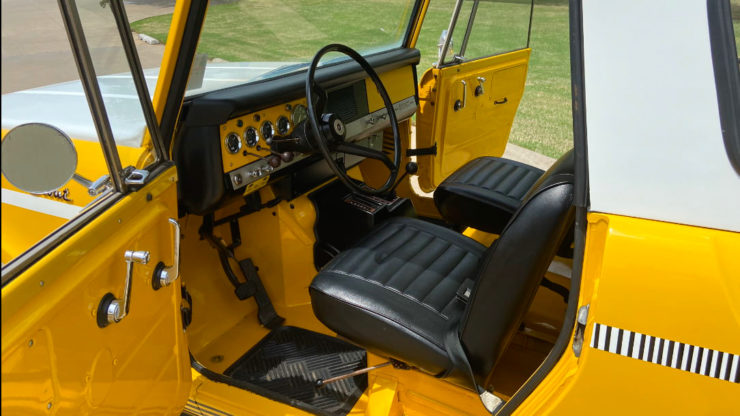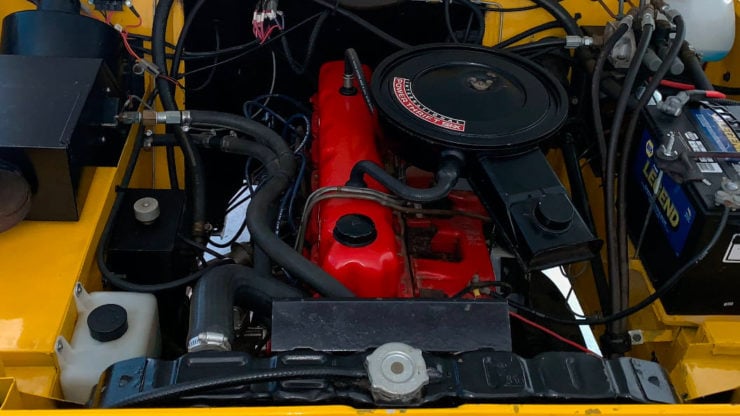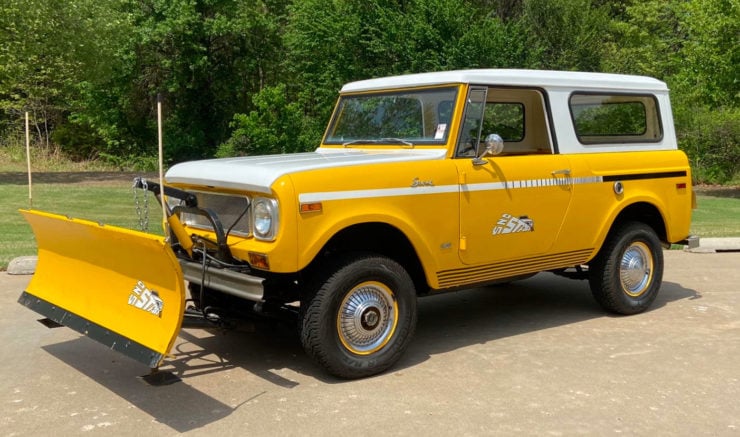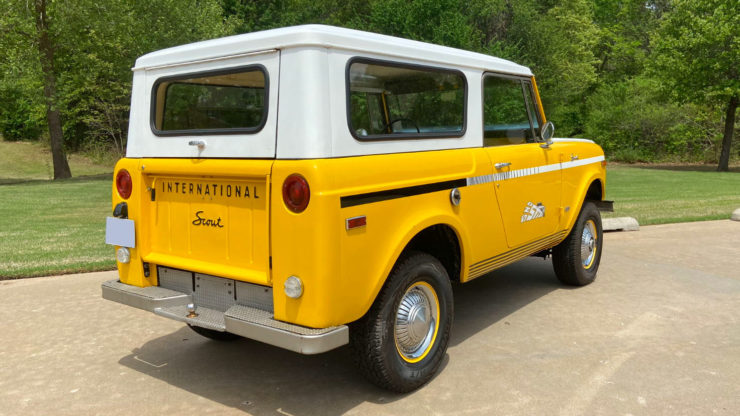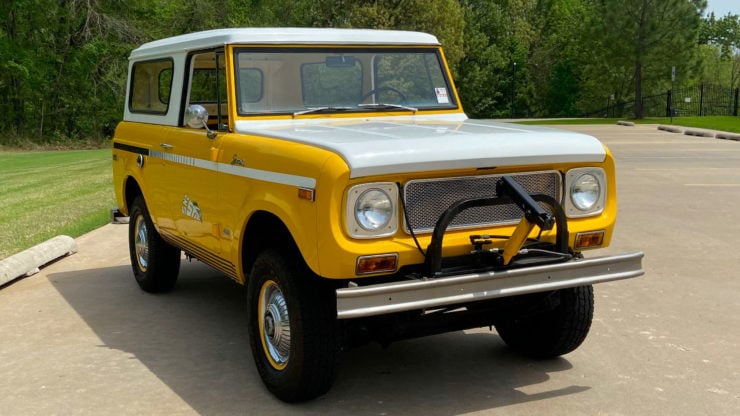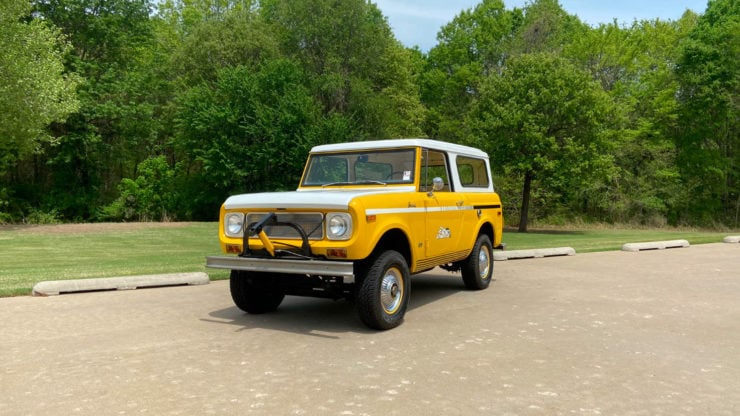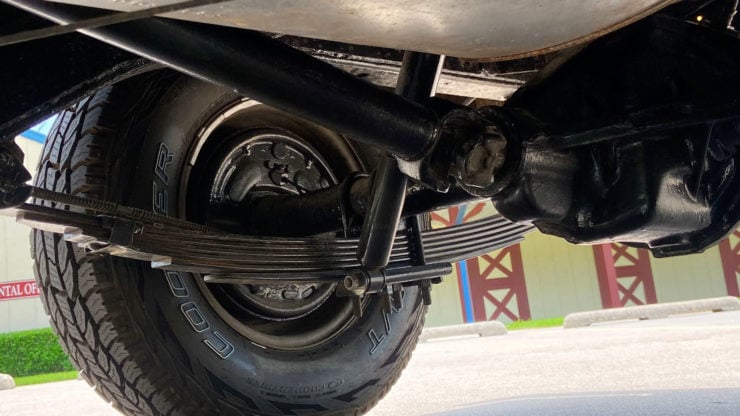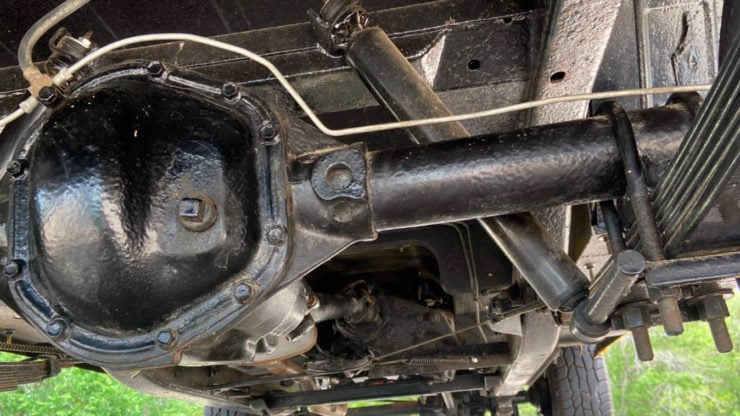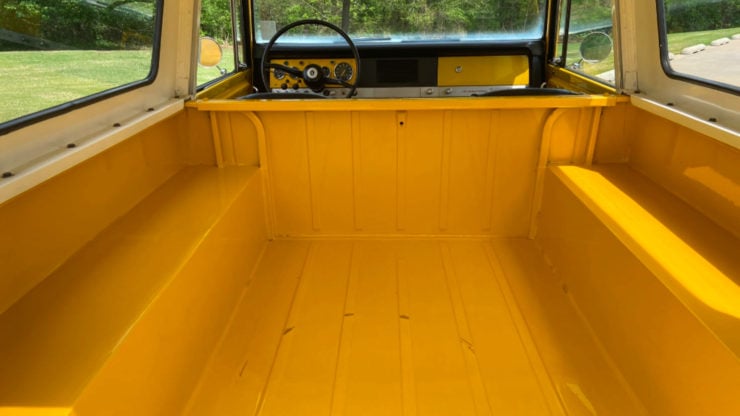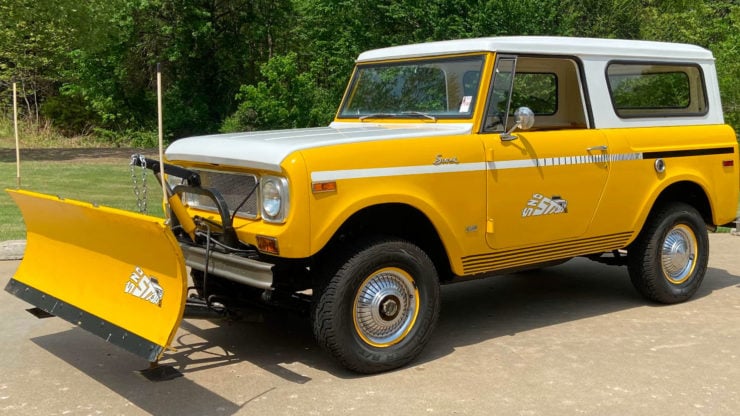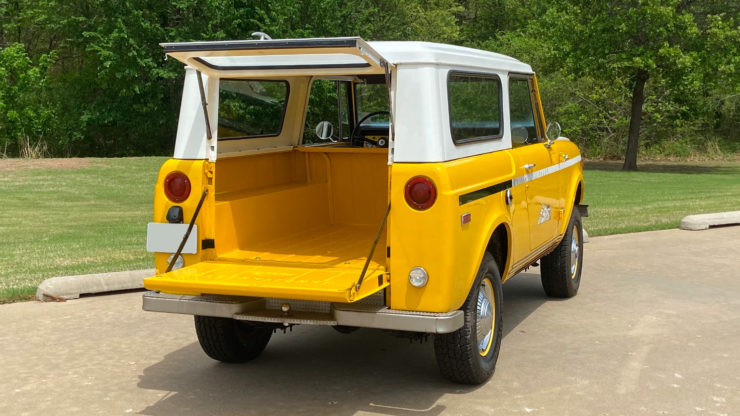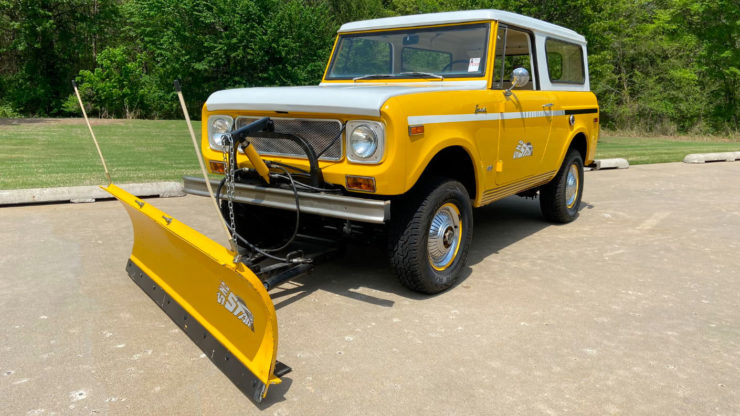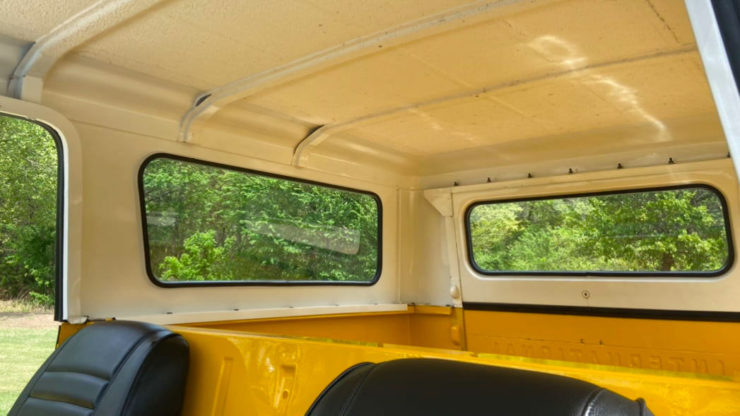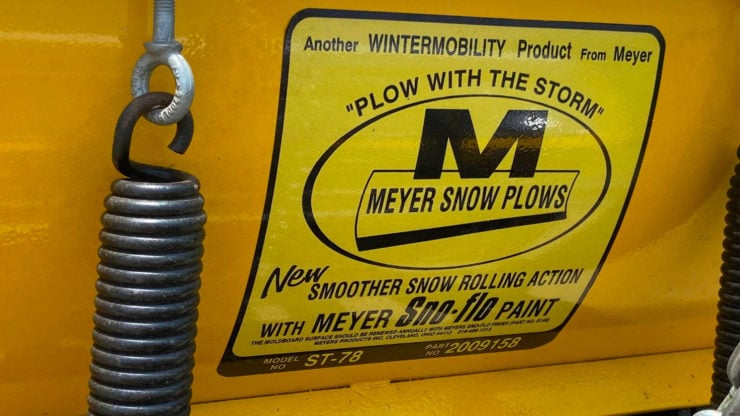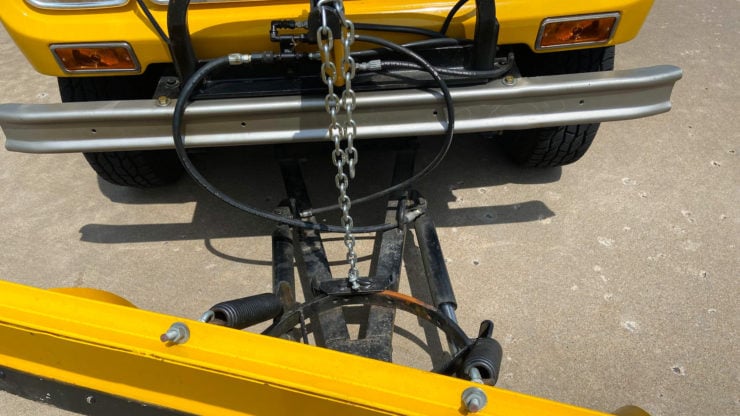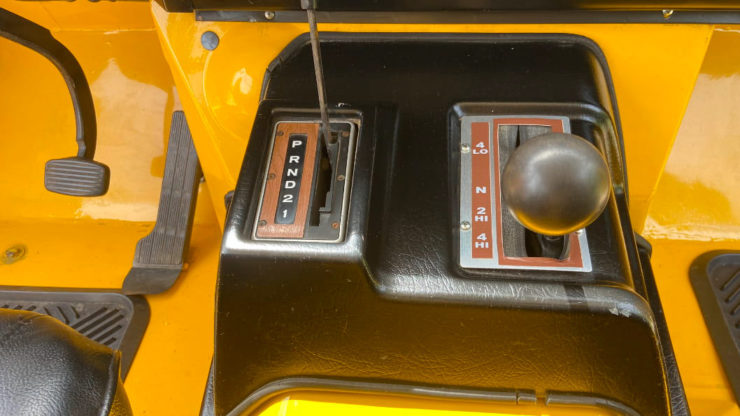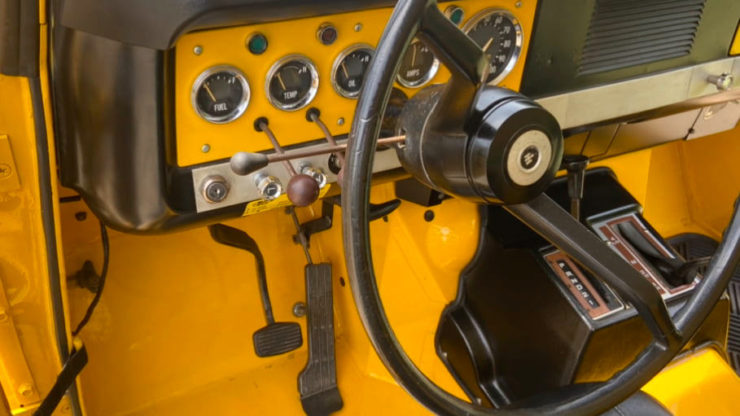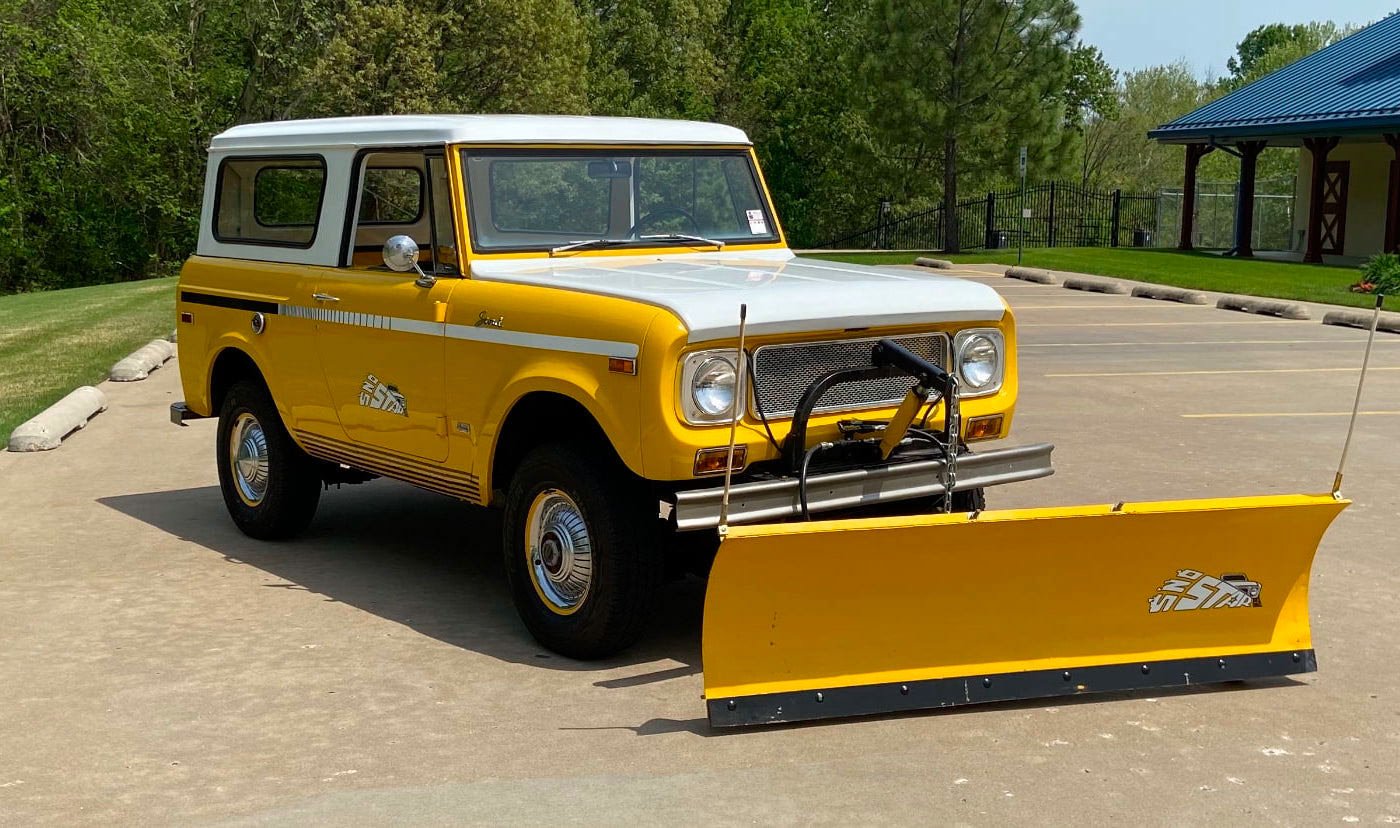This is the 1988 Jeep Comanche Race Truck that was driven by Tommy Archer in all 11 rounds of the 1988 SCCA RaceTruck Challenge – winning four races and earning the Driver’s Championship with 156 points in total.
Pickup truck racing is a form of motorsport that might seem a little odd to non-Americans, with the exception of Australians who have been racing their utes for decades. Pickup truck racing has a nationwide cult following in the USA, and remains popular today.
Fast Facts – 1988 Jeep Comanche Race Truck
- The Jeep Comanche was released in 1985 as a new pickup truck version of the popular Jeep Cherokee 4×4 SUV.
- A significant number of changes were made to the Cherokee to create the Comanche, the rear end was changed from unibody to body-on-frame, the rear suspension was redesigned for carrying heavier loads, and of course, the rear body work was changed into a pickup bed.
- The Comanche proved popular thanks in part to its low sticker price of $7,049 – that’s just $17,760 in 2021 dollars. Chrysler bought out AMC in 1987 specifically to get its hands on the profitable line of Jeep vehicles.
- The 1988 Jeep Comanche you see here is a race truck that was built by Tommy and Bobby Archer with the Jeep Motorsports team for the SCCA RaceTruck series. It’s powered by a 2.5 liter inline-four paired with a 5-speed manual transmission.
The SCCA RaceTruck Challenge
The SCCA RaceTruck Challenge was a relatively short-lived racing series that ran from 1987 to 1991. The series featured race-modified production pickup trucks racing on road circuits across the United States.
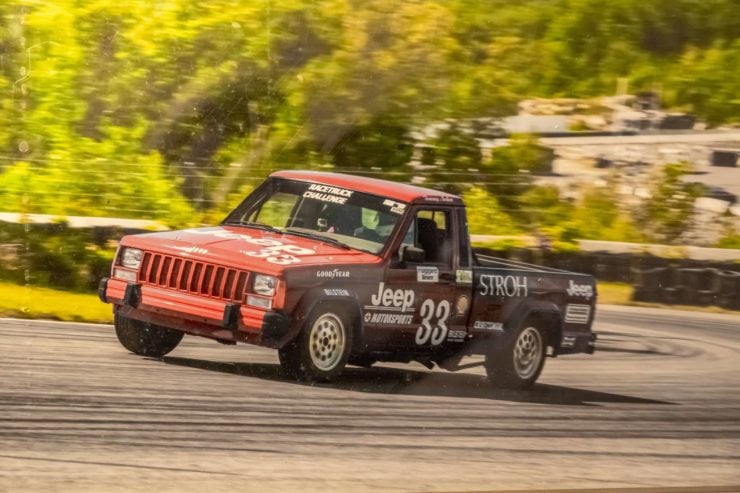
By the end of the 1988 SCCA RaceTruck Challenge season, the Comanche you see here had taken four wins and the Championship thanks to the driving of Tommy Archer.
The constructors that fielded trucks in the series included Nissan, Jeep, Ford, Dodge, Mitsubishi, Isuzu, Toyota, Chevrolet, and Mazda.
The Championship would be won by the Nissan D21 twice, in 1987 and 1989, the Jeep Comanche (shown in this article) in 1988, the Mazda B2000 in 1990, and the Ford Ranger in 1991.
The first big break came for the series when it was selected as a support event for the Trans-Am Series and CART, this garnered exposure to a considerably larger audience of race fans and helped its popularity.
After the SCCA RaceTruck Challenge ceased in 1991 the NASCAR SuperTruck Series followed four years later in 1995. The SuperTruck Series is one of three national divisions of NASCAR which also include the NASCAR Xfinity Series and the NASCAR Cup Series.
Above Video: This is original TV coverage of the 1987 SCCA RaceTruck series, the resolution is low but it’s enough to give you a good feel for what the racing was like. The audio does cut in and out a little but it’s mostly there.
Pickup truck racing remains popular in the United States however it’s still a niche form of motorsport with a smaller audience than the more traditional NASCAR events.
The Jeep Comanche Race Truck Shown Here
As mentioned in the introduction, this isn’t just any racing truck. It’s the modified 1988 Jeep Comanche that was piloted by American racing driver Tommy Archer in the 1988 SCCA RaceTruck Challenge.
He drove this truck in all 11 races, winning four of them and and placing well enough in the others to win the Driver’s Championship – with 156 points in total ahead of second place finisher Jeff Krosnoff in his Nissan D21.
Before any racing took place the truck was modified by Tommy and Bobby Archer working in collaboration with the Jeep Motorsports team.
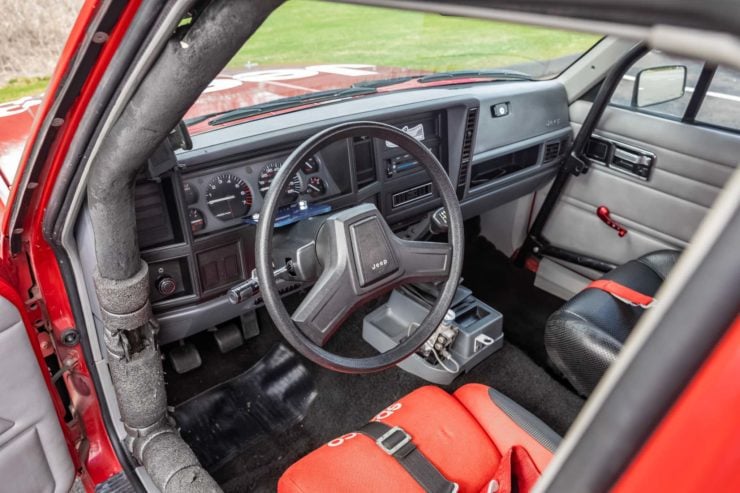
With the obvious exception of the roll cage and racing seats, the rest of the interior looks largely stock. There is a discreet little brake bias selector down next to the shifter however.
The car now has alloy wheels and lowered suspension for racing with adjustable sway bars front and back. This is the 2×4 rear-wheel drive variant of the Jeep Comanche, and you’ll note the long leaf springs in the rear that are mounted under the live axle – the Cherokee had its springs mounted on top of the axle.
The truck has front disc brakes and rear drums, there’s a centrally-mounted fuel cell in the rear for safety, and the interior of the truck has a roll cage, racing seats with five-point harnesses, a fire extinguisher, and a driver-side window net.
Power is provided by a 2.5 liter inline-four cylinder gasoline engine paired with a 5-speed manual transmission, there’s no mention in the listing of any performance modifications to the engine but in stock trim it made 121 hp and 141 lb ft of torque.
If you’d like to read more about this truck or register to bid you can visit the listing here, it’s currently being offered for sale in a live auction on Bring A Trailer out of Rocky Hill, Connecticut.

The truck rides on lowered suspension with adjustable front and rear sway bars, it has a roll cage, racing seats with five-point harnesses, and a rear mounted fuel cell.
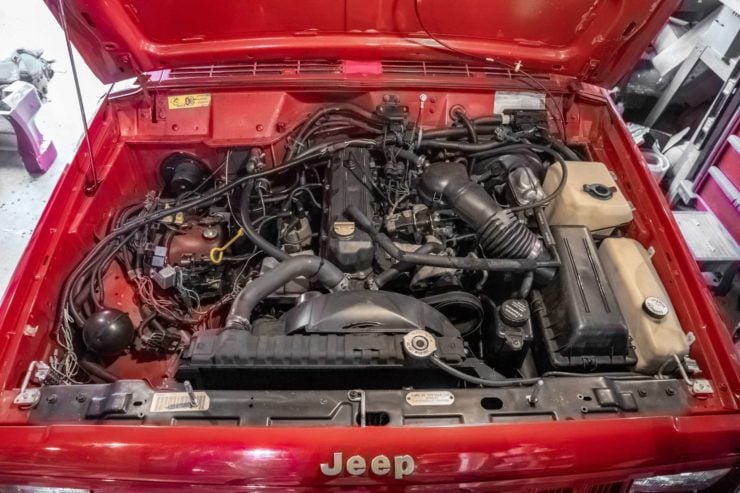
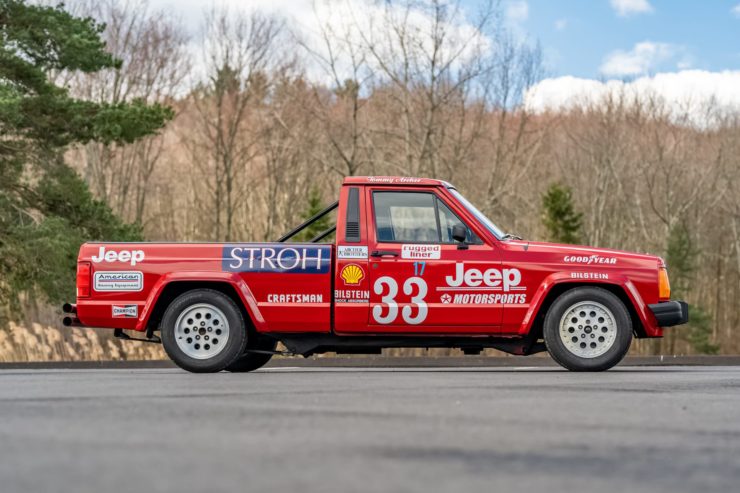
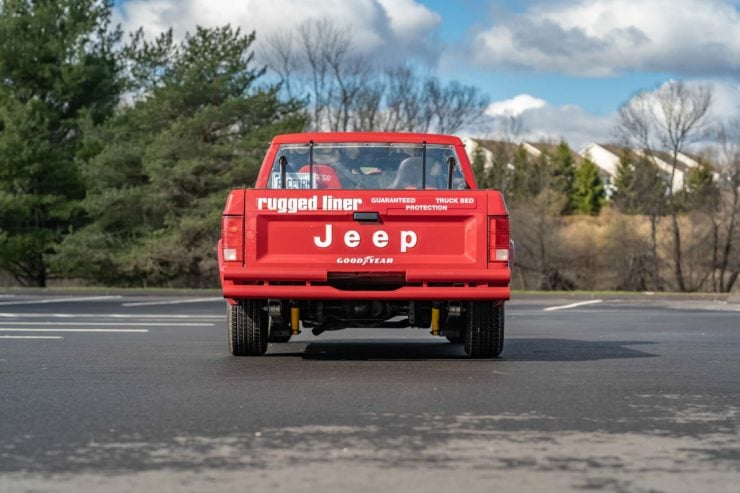
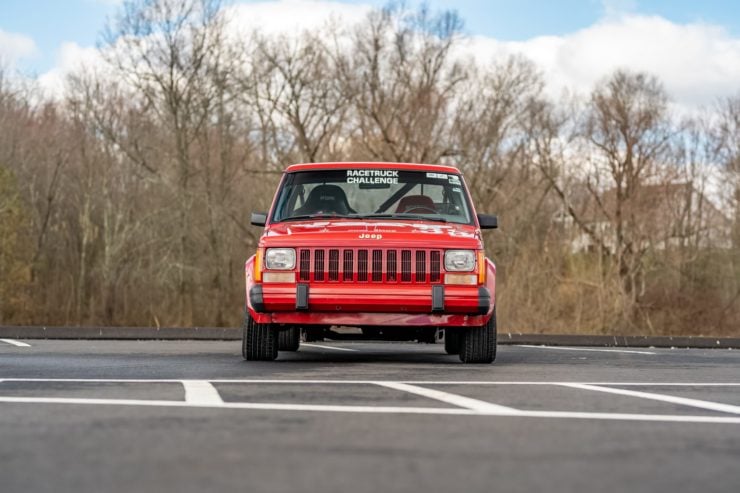
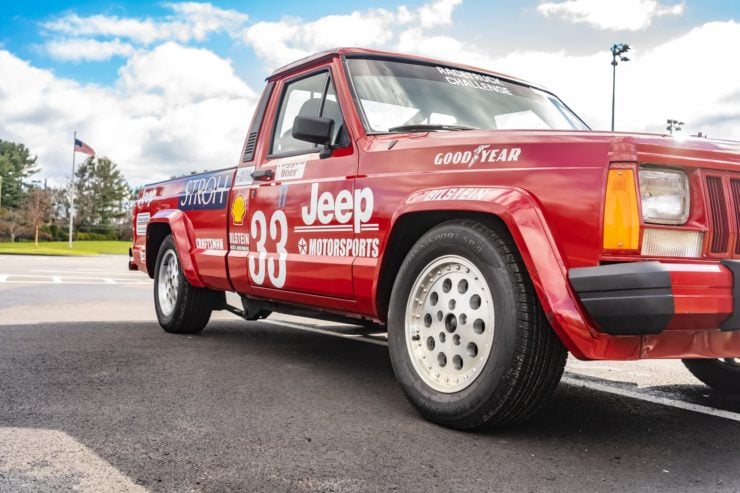
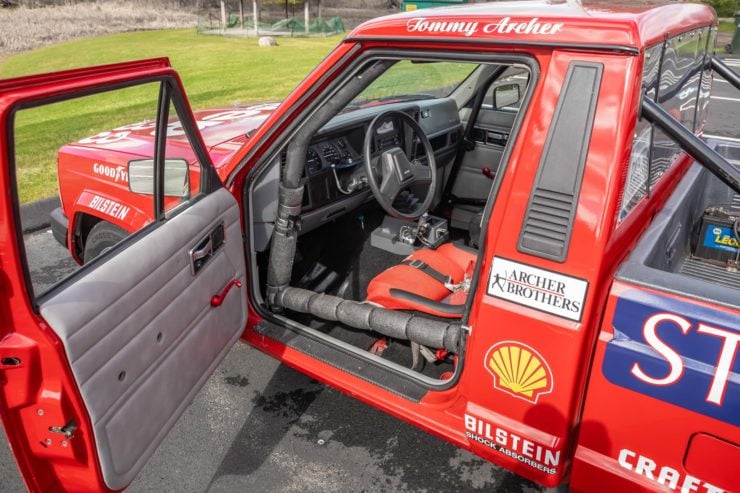
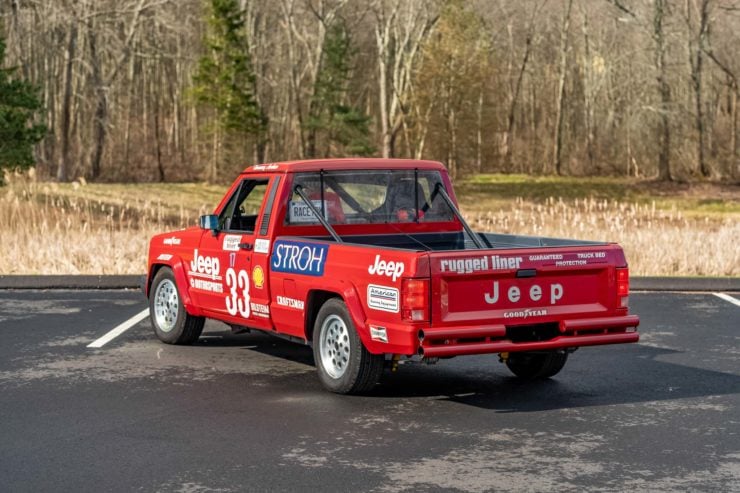
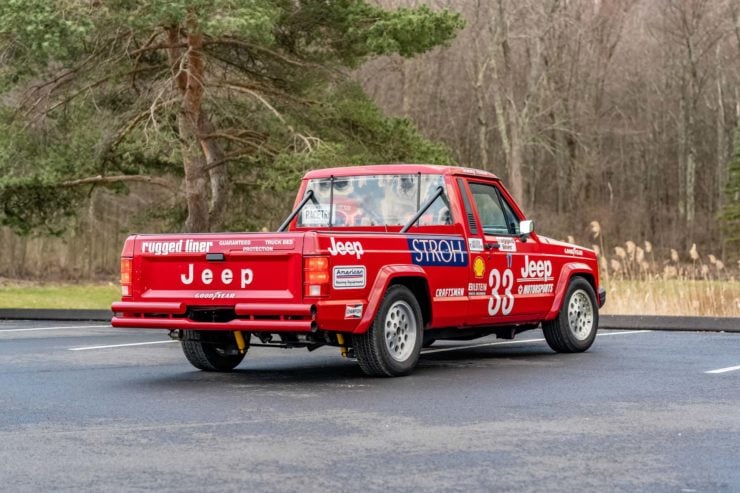
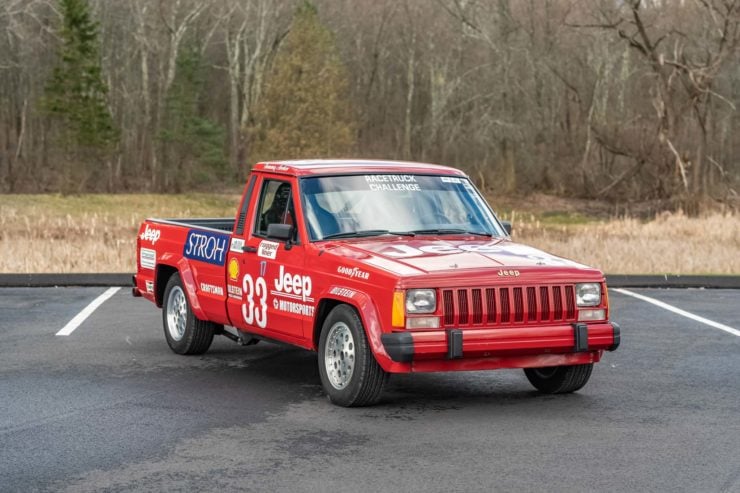
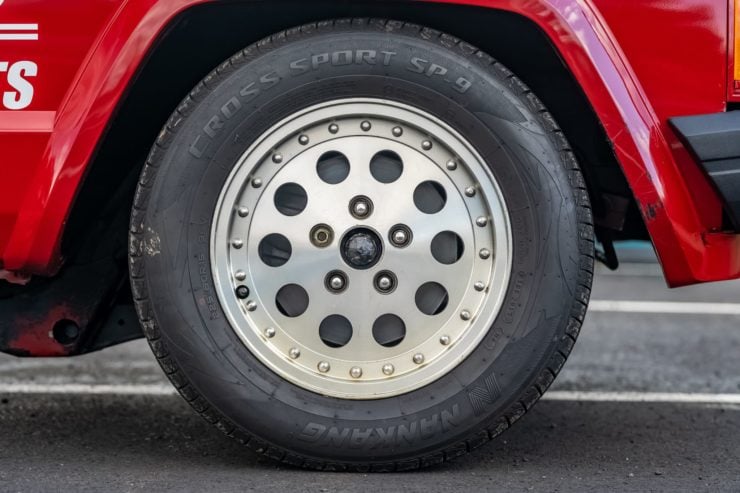
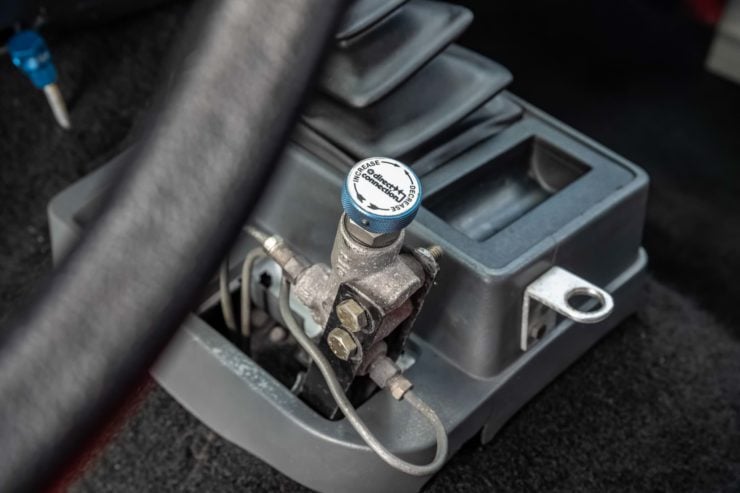
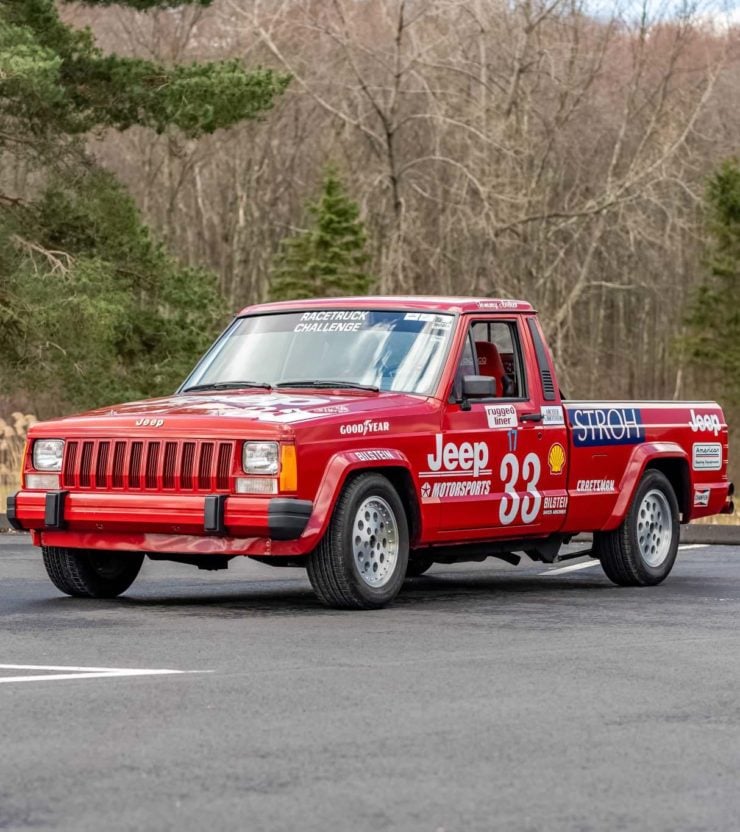
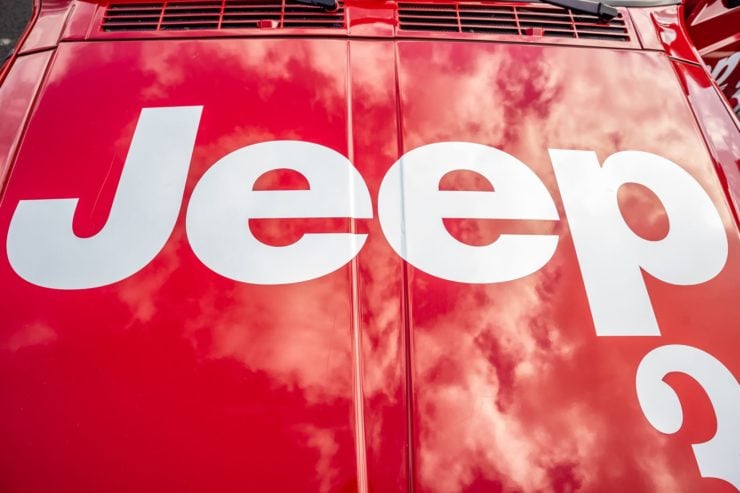
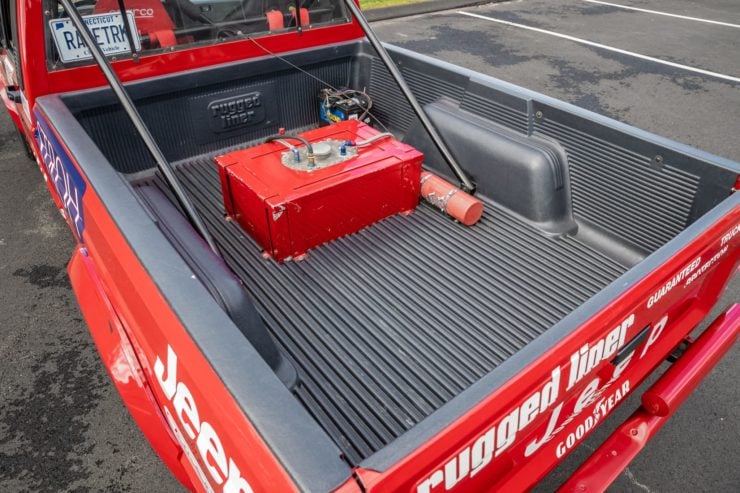
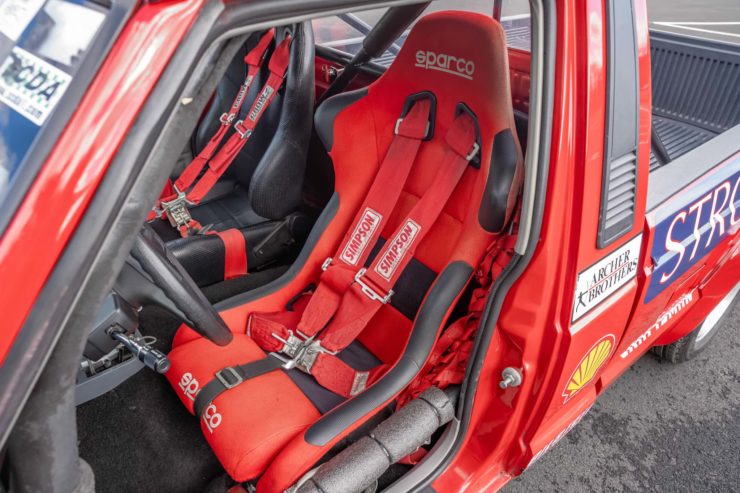
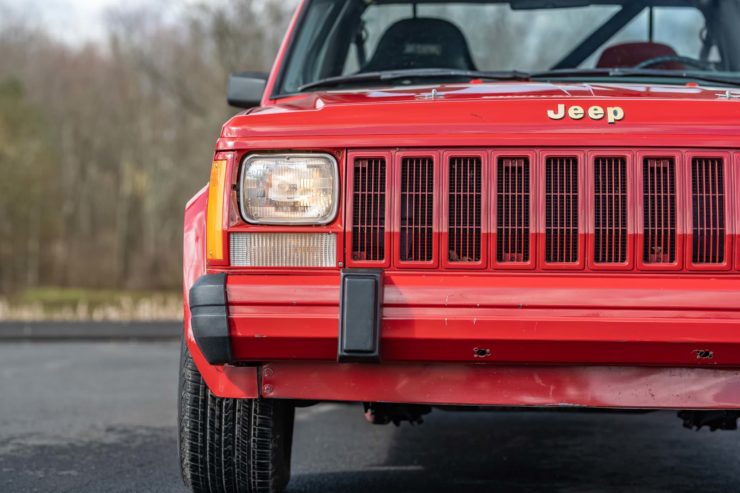
Images courtesy of Bring A Trailer
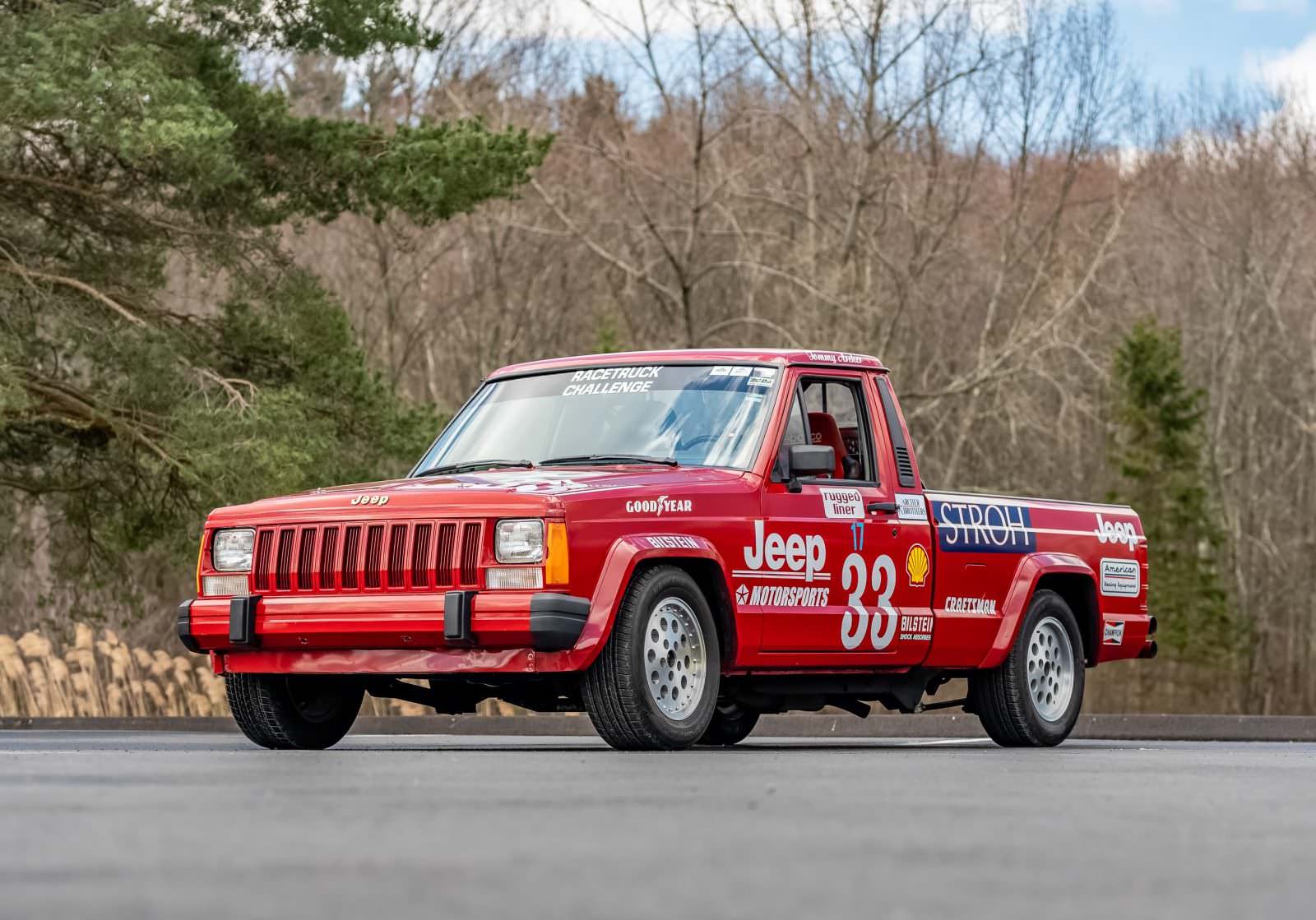
The post For Sale: A Championship Winning 1988 Jeep Comanche Race Truck appeared first on Silodrome.
from Silodrome https://silodrome.com/jeep-comanche-race-truck/
via gqrds
